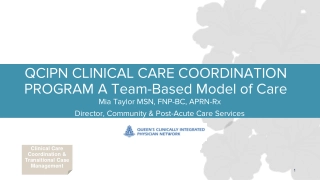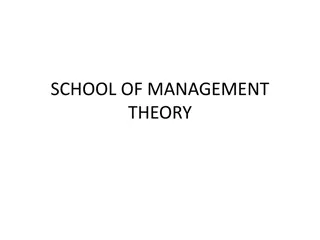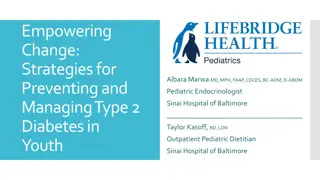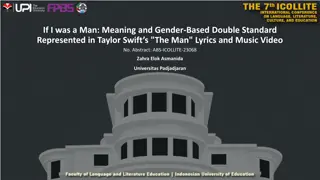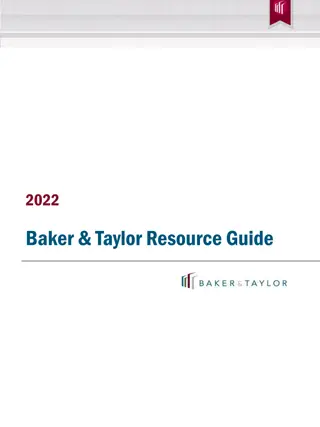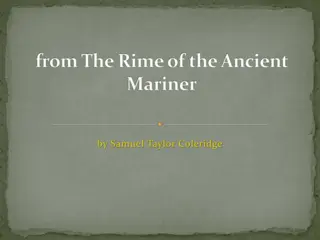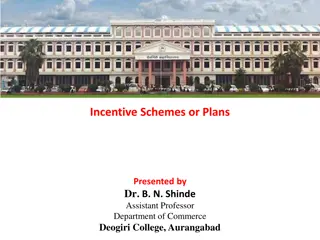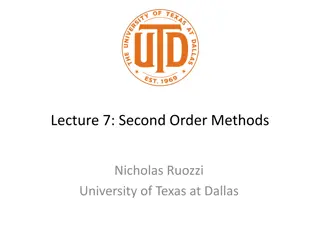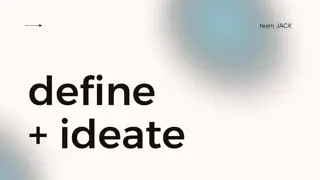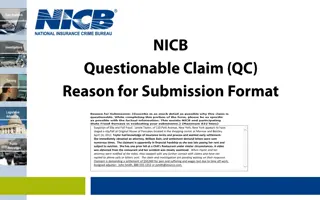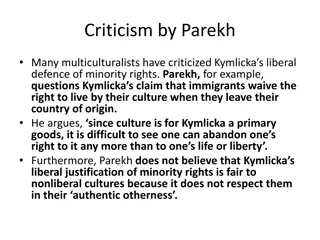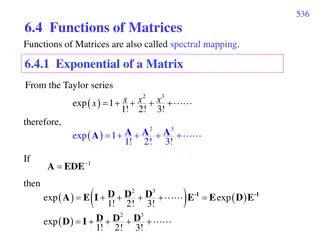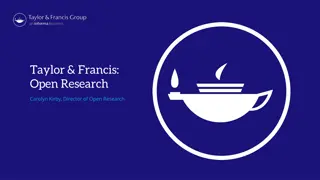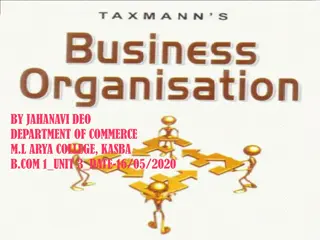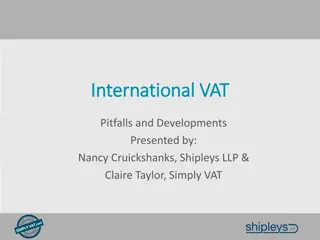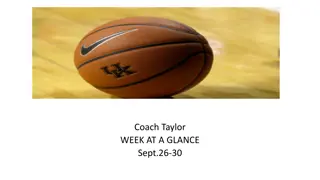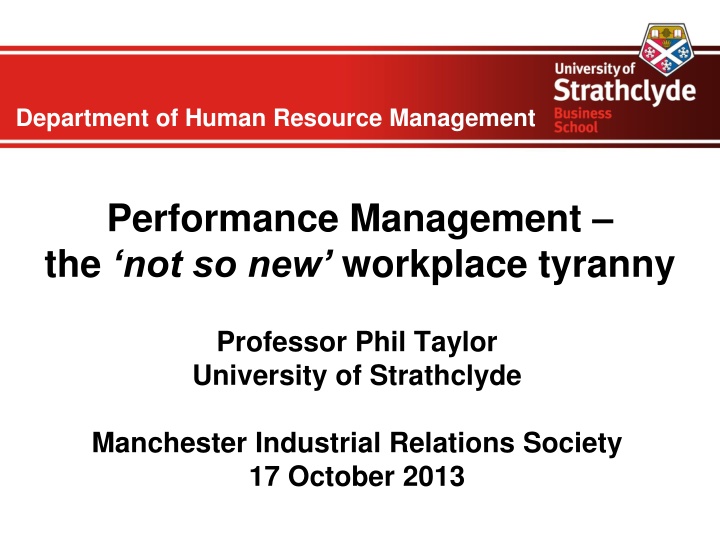
Workplace Tyranny and Worker Rights in Modern Management Practices
Explore the impact of performance management on workers' mental health, the erosion of worker rights post-2008 crisis, and the evolving landscape of human resource management in the face of economic changes. Dive into discussions on the challenges faced by workers, the regulatory changes affecting employment rights, and the growing disparity in income distribution.
Uploaded on | 0 Views
Download Presentation

Please find below an Image/Link to download the presentation.
The content on the website is provided AS IS for your information and personal use only. It may not be sold, licensed, or shared on other websites without obtaining consent from the author. If you encounter any issues during the download, it is possible that the publisher has removed the file from their server.
You are allowed to download the files provided on this website for personal or commercial use, subject to the condition that they are used lawfully. All files are the property of their respective owners.
The content on the website is provided AS IS for your information and personal use only. It may not be sold, licensed, or shared on other websites without obtaining consent from the author.
E N D
Presentation Transcript
Department of Human Resource Management Performance Management the not so new workplace tyranny Professor Phil Taylor University of Strathclyde Manchester Industrial Relations Society 17 October 2013
Department of Human Resource Management Performance Management STUC Report Workers subject to new forms of Performance Management (PM) .causing mental-ill health? Nothing on effect on workers original research 5 years since crash and crisis of neo-liberalism => austerity, privatisation frenzy, dismantlement of welfare, unemployment, cuts, etc but resistance (Great tricksters Penn &Teller (Cameron & Osborne) UK Gini co-efficient (0.36 0.34 - 2010-11) the largest growth in income inequality in 50 years
Department of Human Resource Management Post-2008 Can t we just get back to normal? Misunderstanding nature and depth of crisis More than disconnected capitalism (Thompson, 2003) or financialisation (Harman, 2009; Kliman, 2012) Hyman (1987) referred to the new normalcy the new disciplines imposed on workers post-1980 s crisis Now the shaping of new structures of accumulation post-crisis of 2007-8 Senses in which the new normal is now being used Not just a turn of the business cycle but a redrawing of the political-economic landscape
Department of Human Resource Management ConDems attack on worker rights based on the fallacy of the red tape challenge Easier to hire and workers good for the economy unfair dismissal weakened qualifying period to 2 years affecting 2.7 m. workers no fault dismissals Beecroft employers wouldn t have to show that employers were guilty of misconduct no disciplinary procedure no right to appeal at ET (except on discrimination) wholly arbitrary Grown Up or Protected Conversations - employees can t raise in future tribunal case will reinforce bullying fees for employment tribunal users is deterring workers from claims & undermining workplace rights
Department of Human Resource Management Young Report - excluded from official view are the low hazard workplaces The scandal of zero hours contracts Legal changes inseparable from the managerial offensive on the front-line of work Offensive has at least three integrated elements: Performance Management Lean Working Sickness Absence Management Convergence - white-collar workers and manual workers and technical workers and professionals
Department of Human Resource Management Employers Cost Reduction Strategies STAR Inferior Terms and Conditions Outsourcing/ Offshoring Work Intensification, Lean, PM and SAP Automation
Department of Human Resource Management Lean, Performance Management and Work Intensification Integrated managerial offensive that is squeezing increasing effort out of workers Cost-cutting strategies are being translated into an unprecedented intensification of work Restructuring, re-engineering , lean , creative synergies Equivalent or larger volumes of work being done with the same or - more likely - smaller workforces Sheer intensity of effort taking place - closing the porosity of working time (Marx Capital volume 1)
Department of Human Resource Management 1) Lean Working Core thesis organisations which strip out waste gain significant quality and efficiency advantages = Toyota Rhetoric of multi-skilling, task enlargement, worker participation in kaizen (Womack et al, 1990) Lean s claim to remove mind-numbing stress with creative stress - work smarter, not harder mantra Yet workers experiences in autos (Stewart et al, 2009) - tighter supervisory control - narrow tasking - job stress - managerial bullying - lack of voice - traffic lights workers on the edge Consultemics applying lean efficiencies to public sector, FS, NHS, HE etc. (Radnor and Walley, 2010)
Department of Human Resource Management In HMRC lean created a brutal form of Taylorism Lean consultants McKinsey, Unipart After Lean 95% say work very / quite pressurised Pressure had increased a great deal 76% you would be given a pile of post and you could manage it yourself. Most people would flick through and that looks a bit hard, I ll put that to the back, do it this afternoon ...You would give your daily results to your manager. Now they want to know what you ve done every hour, which you can t manage things because some things take an hour and one minute, so in the first hour you ve done zero . Statistical relationship between work intensity, time spent at work station, coming to work ill and frequency of symptoms (Carter et al, 2013)
Department of Human Resource Management Ill-health Symptoms and Time at Work Station % of time at work station <85% 85-95% >95% Daily/several times a week 47 42 62 45 43 28 38 29 38 31 33 25 32 21 26 17 24 15 19 5.0 15 Mental fatigue*** Physical tiredness*** Stiff shoulders Stiff neck** Stress** Backache* Headaches Pain/numbness in arms/wrists* Eyesight problems* Blocked nose** Almost half spend more than 95% of time at work station 62 45 47 42 44 33 31 29 22
Department of Human Resource Management 2) Performance Management Measurement of performance central to management Alignment of individual with organisational objectives HRM texts read like 1984 - Agreed , shared , mutual expectations , dialogue , support , guidance
Department of Human Resource Management PM synonymous with Performance Appraisal- an annual ritual , reviews now more frequent Always a problem with subjectivity who decides? Managing underperformance a positive process (Torrington et al, 2011) and in texts published 2013 PM has become continuous, backward looking and forward looking with a serious disciplinary purpose Performance Improvement, PIPs, Managing Performance, PIMs, IIPs the real bite in PM In some organisations now 3rdgeneration PIPs
Department of Human Resource Management Micro-measurement and micro-management of individual performance facilitated by technologies Quantitative outputs and targets AHTs, CHTs etc. KPIs, SLAs determined at the top, cascade down through tiers of managers, to TLs and then workers Reducing the discretion of FLMs tight links in the chain of command nothing to do with me The example of flow controllers instead of TLs Managers themselves given targets for the numbers of managed exits , underperformers, SAP actions etc. What is bullying? Is it 1-1 relationships or systemic? Even the so-called measurables are pseudo-science - parameters and definitions set by management
Department of Human Resource Management Management obsession with measurables , metrics , deliverables , metrics , stats , MIS Quantitative measures are strictly imposed Evidence from FS and telecoms that targets first systemically used in contact centres then spread to the back office and widely across functions HMRC 6 tax cases an hour, 80 for opening letters BT engineers tightly timed jobs, monitoring India and UK example Universities workload models, dashboards , REF Pre-dated the crisis but accelerated by it The new normal of doing more with less
Department of Human Resource Management Qualitative behaviours, attitudes and traits In one finance sector company there were 13 measurable quality criteria including delight the customer , speaks up , shares ideas Do what is right for the customer, community and organisation, putting aside own agenda Act like the owners of the business having heart achieving excellence , building trust Greater room for subjectivity and ulterior motives leaves people vulnerable to the whim of a supervisor (Telecoms Regional Officer)
Department of Human Resource Management FULL TIME units 510 Charlie Moore 100% 0% 80% 0% 20% Chris Ford 100% 0% 40% 40% 20% 100% 20% 32% 32% 16% 100% 20% 32% 32% 16% 100% 0% 40% 40% 20% 100% 10% 36% 36% 18% 100% 0% 40% 40% 20% 100% 0% 40% 40% 20% 100% 0% 40% 40% 20% 100% 0% 40% 40% 20% 100% 40% 28% 28% 14% 100% 0% 40% 40% 20% 100% 40% 28% 28% 14% 100% 50% 20% 20% 10% 100% 0% 80% 0% 20% This refers to Faculty buy out for roles such as Vice Dean (Research) and ESRC buy out for Tricia's Nominal Loading Breakdow n n Nominal Loading Breakdow Deduction s 102 102 51 204 204 255 0 102 102 75 0 51 0 96 0 0 53 38 187 137 323 184 29 67 96 603 144 0 0 0 0 204 61 0 204 30 255 34 0 0 4 0 0 59 0 0 36 12 16 123 52 175 204 29 25 54 433 -78 60 0 0 46 44 15 165 34 199 204 29 17 45 449 -62 35 0 0 65 44 0 144 68 212 204 29 34 62 478 -32 31 0 0 73 22 15 141 52 193 204 29 25 54 451 -60 14 0 0 66 35 31 146 171 317 204 29 84 113 634 124 42 0 0 33 39 0 114 68 182 204 29 34 62 449 -61 109 102 0 0 0 0 0 0 0 0 0 0 0 Actual Teaching Loading By Course 27 25 35 16 164 17 181 143 29 51 18 23 96 0 96 163 29 29 41 8 153 54 34 8 126 15 35 31 115 34 149 102 29 17 45 297 42 36 57 0 202 120 321 51 34 59 93 466 -45 88 54 0 244 120 364 51 34 59 93 508 -2 0 0 204 204 153 163 29 126 143 29 Citizenshi p 0 0 9 0 102 510 29 288 -120 29 345 -63 37 361 55 29 297 -9 0 lie C 63% 0% 18% 0% 81% Fo hr e rd is C ar M or h o 0 0 0 0 0 0 0 0 0 0 0 0 0 19% 32% 6% 20% 76% 30% 32% 6% 20% 88% 34% 40% 11% 0% 85% 63% 36% 19% 10% 128% 39% 40% 9% 0% 88% 42% 40% 12% 0% 94% 38% 40% 11% 0% 88% 62% 40% 22% 0% 124% 36% 28% 7% 40% 111% 36% 40% 12% 0% 88% 25% 28% 6% 40% 98% 29% 20% 9% 50% 108% 71% 0% 18% 0% 90% % of nominal loading (510 Units) Units) % of nominal loading (510
Department of Human Resource Management The Performance Management Bell Curve Meets expectations Below Above expectations expectations Excellent performance Serious under performance 10% 15% 50% 15% 10%
Department of Human Resource Management Bank A Expected Performance Ratings
Department of Human Resource Management BT Performance Ratings (2102-13) 70 60 50 40 30 20 10 0 Excellent Very good Achieves standards Development needed Unsatisfactory
Department of Human Resource Management The language is specific, You have not achieved, you are an underachiever . Widespread discontent and more evidence of contesting rankings and ratings Frontier of control ever moving goalposts Round table process or calibration to prevent FLMs inflating scores fixed pot of money Ethnic, age, part-time, disability discriminations (Prospect) Scale of intimidation in one bank 10% on actions War for Talent (Michaels et al, 1997) get rid of 10% - the McKinsey hegemony
Department of Human Resource Management There was quite a sinister practice that we were to use the car-park conversation. A manager would be expected to take an employee, who had received poor performance score, outside for an informal discussion. The manager would then start a conversation along the lines of, You know your last review. It s only going one way, isn t it? You should perhaps think about coming to an arrangement . It was important that the manager would never make any explicit suggestion that the worker should leave. We were given training in how to conduct these conversations; a one-day course on employee relations for HR managers, where we would go through the best mechanisms for ensuring that an employee would voluntarily suggest a compromise agreement . (Ex-HR Manager, BT)
Department of Human Resource Management Consequences for Workers If your name is up on the whiteboard, you ll have emails going saying who is performing badly and who is performing well, who is red, who is amber, who is green, that kind of thing, so the pressure is very intense and it really does affect people badly (Bank A, National Officer) There is a culture in our workplace of managers using extreme, derogatory language. Don t get me wrong, there are decent ones, but they are overshadowed by the aggressive ones...downright nasty, horrible stuff bottom feeders for those on the lowest rankings (Rep)
Department of Human Resource Management Conclusion Strategies using punitive PM and SAPs are short- termist but are driven by cost-cutting Opposition at different levels multi-faceted Business/soft-HRM case huge commitment of managers time with questionable outcomes The Bell curve to be rejected as inapplicable to employee performance in principle and practice Potentially discriminatory DDA, Equality and Age conduct audits of rankings by gender, age, status Unions at workplace level actively challenging unfair rankings, before the event as well as after
Department of Human Resource Management Appeal, appeal, appeal break the culture of people individualising their scores/ranks H&S and stress audits can be an organisational tool working conditions and ill-health inseparable Broader opposition to Beecroft, protected conversations and erosion of employment rights Public exposure of the worst cases of new tyranny in the contemporary workplace name and shame National level - CWU and industrial action Opportunities for organising and recruiting in unionised and non-unionised environments
Department of Human Resource Management The Vicious Circle Intensification of work & insecurity Contributes to illness Mental ill-health Increases insecurity & likelihood of disciplinary Coming to work when ill SAP PM & so-called underperformance Makes condition worse
Department of Human Resource Management Michaels, E., Handfield-Jones, H. and Axelrod, B. (2001) The War for Talent, Harvard Business School Pollert, A. (1989) The flexible firm fixation or fact , Work, Employment and Society, 3.1 Radnor, Z. (2010) Transferring lean into government Journal of Manufacturing Technology Management, 21:411-428 Stewart, P. et al (2008) We sell out time no more : workers struggles against lean production in the British car industry, London: Pluto Taylor, P., Cunningham, I., Newsome, K. and Scholarios, D. (2010) Too scared to go sick reformulating the research agenda on sickness absence , Industrial Relations Journal, 41(4):270-288 Thompson, P. (2003) Disconnected capitalism: or why employers can t keep their side of the bargain , Work, Employment Society, 17.2: 359-78
Department of Human Resource Management Torrington, D., Hall., L. and Taylor, S. and Atkinson, C. (2011) Employee Performance Management in Human Resource Management (8th edition), London: Prentice Hall, pp.263-286 Womack, J.D., Jones, D.T. and Roos, D. (1990) The Machine that Changed the World: The Triumph of Lean Production, New York:Rawson Macmillan


